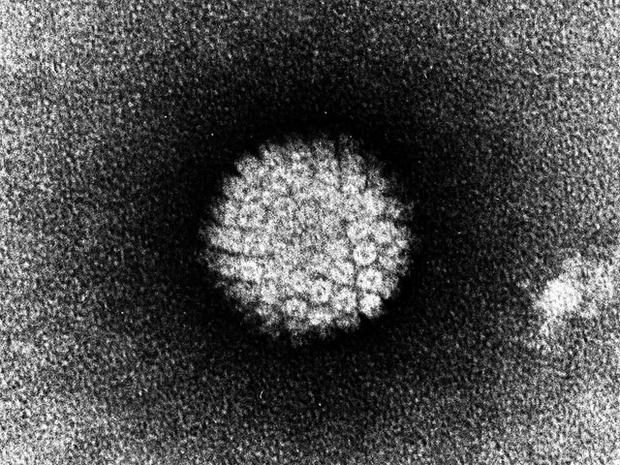HPV infects half of American men: Study
(CBS) A study out today in "The Lancet" by Moffitt Cancer Center researcher Dr. Anna Giuliano and her colleagues finds that 50% of men ages 18 to 70 in Brazil, Mexico, and the U.S. have genital infection with human papillomavirus (HPV).
In addition to causing cervical cancer in women, HPV causes warts and cancer of the genitals and anus in both sexes. Over the past several years, scientists have realized that the virus can also cause head and neck cancers.
Dr. Aimee R. Kreimer, of the National Cancer Institute, estimates that of the roughly 8,000 cancers of the oropharynx (tonsils and base of the tongue) seen in the U.S. in 2010, 65 percent were from HPV infection. Eighty percent of these are in men.
The rates for HPV-associated cancers like these are rising. For sites like the mouth and larynx that are associated with tobacco and alcohol use, the rates are decreasing (though they're still too high, since too many people smoke and abuse alcohol).
An infection rate of 50% for a virus that can cause cancer sounds scary. But knowing a few facts about HPV helps put the risk in perspective.
About 90% of men and women infected with HPV virus get rid of it on their own within about two years. There are many strains of HPV, and only some cause cancer. Only about 6 percent of men have genital infection with HPV 16 , the strain linked to more than 90% of cancers of the head and neck. And only about 0.6 percent of men have HPV 16 in specimens taken from their mouths. What percentage of those men go on to develop head and neck cancer is unknown.
How does HPV get from the genitals to the mouth? Oral sex is one obvious answer, but the virus may also be spread by the fingers, kissing, or another unsuspected route. Why does the infection persist in 10% of people? Right now there are more questions than answers.
What's urgently needed is some way of detecting the virus early: the oral equivalent of a Pap smear. Researchers are working on such a test at Johns Hopkins, where earlier this month I interviewed a 64-year-old-man whose HPV-linked tongue cancer was picked up only incidentally because he happened to go to an ear, nose, and throat doctor to get ear wax removed. There has to be a better way of picking up asymptomatic HPV infection of the head and neck - before it progresses to cancer.
Today's study is sure to provoke discussion about whether an public health officials should recommend a HPV vaccine like Gardasil for males as it is for females. The vaccine covers four strains of HPV, including strain 16, the one most commonly linked to head and neck cancer. The Centers for Disease Control and Prevention currently supports "permissive use" of the vaccine in males between the ages of nine and 26 but stops short of actually recommending its use.

